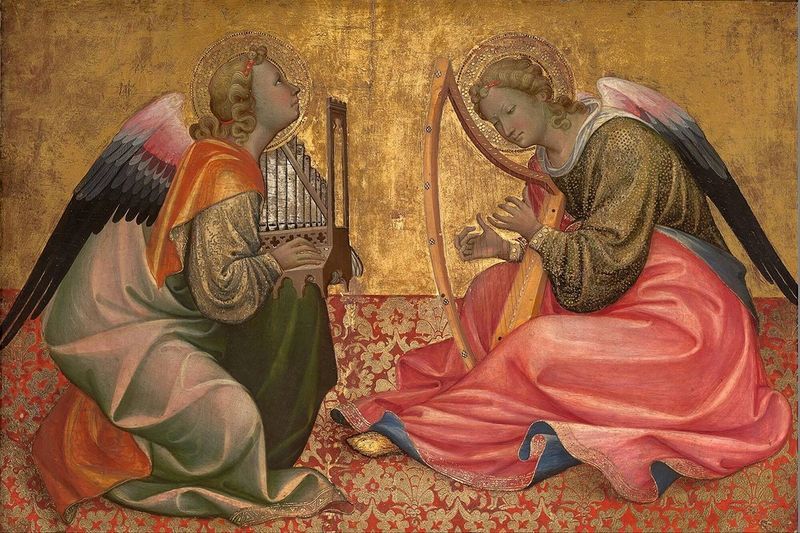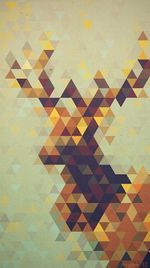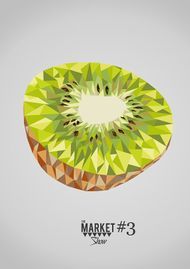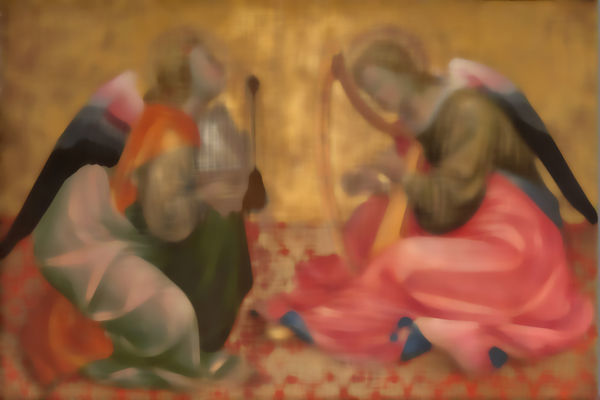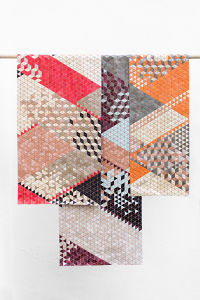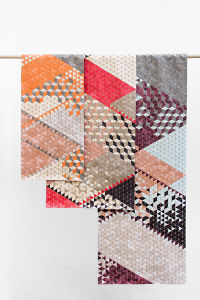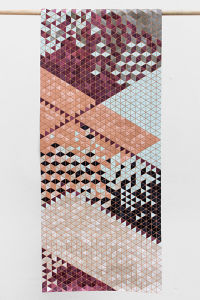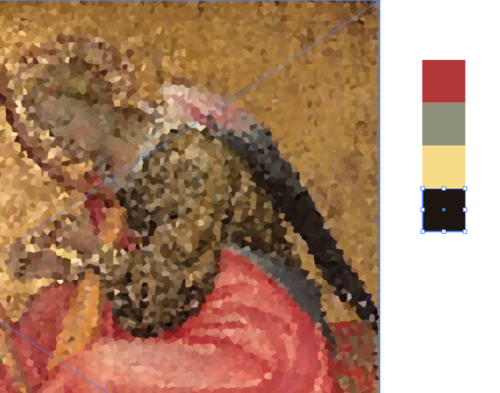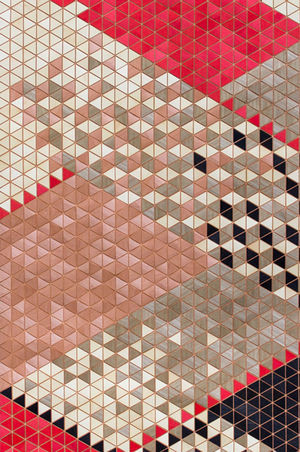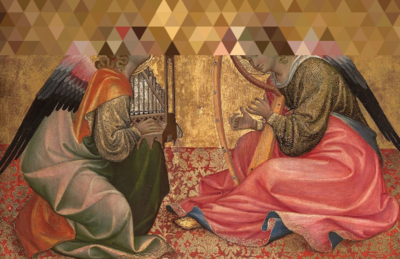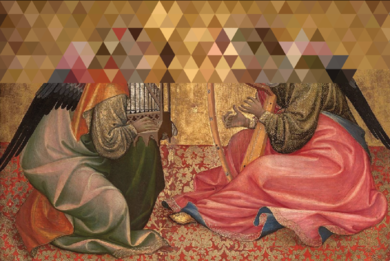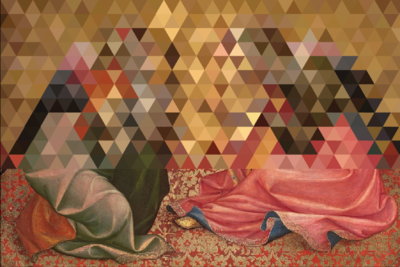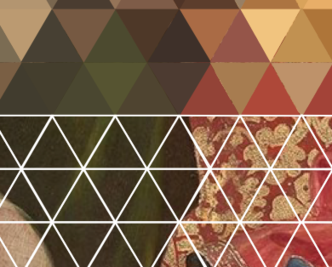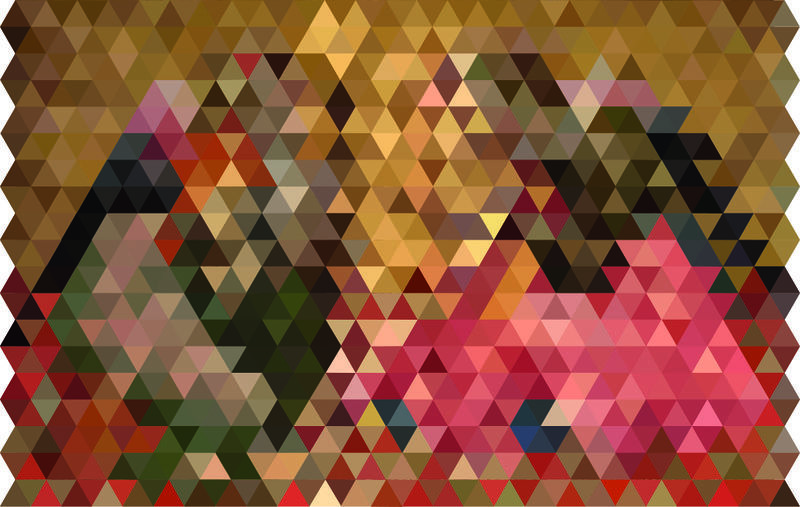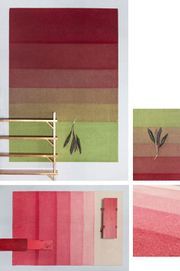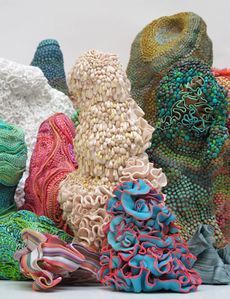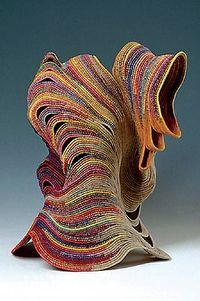User:Dionne
Contents
Fantastic Forgeries
Gherardo Starnina - Twee op de grond zittende, musicerende engelen
Instruments: Organ (orgel) & Harp
Information
22/09: Het paneel maakte oorspronkelijk deel uit van een altaarstuk, een polyptiek ofwel veelluik. De engelen bespelen instrumenten, links een klein orgel en rechts een harp. De omhoog gerichte blik van de linkerengel is een aanduiding van de grotere compositie, waar zij ooit deel van waren.
Volgens Vasari was Gherardo di Jacopo Starnina één van de beroemdste en beste schilders van Florence. Starnina was van 1395 tot 1406 werkzaam in Valencia. In de Spaanse havenstad had hij kennis gemaakt met de Internationale Stijl, die in 1393 door de Duitse schilder Marçal de Sas aldaar was geïntroduceerd. Na zijn terugkeer in Florence gaf Starnina met zijn kalligrafische lijnvoering en delicate expressiviteit een nieuwe impuls aan de Florentijnse schilderkunst. Hij bevrijdde haar van de levenloze formules die van Giotto's grootse stijl waren overgebleven. Zowel Lorenzo Monaco als Lorenzo Ghiberti werden gevormd door Starnina's stijl.
Titel: Twee op de grond zittende, musicerende engelen Schilder: Gherardo Starnina, Florence 1354/1360 - Florence 1409/1413 Jaartal: 1400 - 1410 Locatie: Dit object is te zien in zaal 03 Objectsoort: schilderij Inventarisnummer: 2557 (OK) Afmetingen: 47,7 x 71,8 cm Materiaal en techniek: tempera op paneel Creditline: Verworven met de verzameling van / Acquired with the collection of: D.G. van Beuningen 1958 Collectie: Oude Kunst Tentoonstellingen: De Collectie Verrijkt (2011)
Research in the Library
Replica
Pixellating the painting through digital mediums
22/09: The copy will become a digital version of this painting. Made in Illustrator in a certain drawing stye.
Update 23/09: This is a simple approach and needs development. I will use digital techniques to pin point all the different colors, but in the end it will become something tangible, not only digital
Through the use of photoshop I put different filters on top of the painting, to see which effect it has on the colors and recognition of the painting
Filter Pixel Facet
Filter Pixel Fragmentation
Filter Pixel Kleur Halftoon
Filter Pixel Mezzotint
Filter Mozaïk
Filter Pointilleren
Filter Ruis Mediaan
Filter Pixel Kristal
This last filter could be a tool for the digital replica version, maybe I can laser cut all these triangles on a certain material and paint them in all the right colors. This filter made me think about this work:
Elisa Strozyk
This colorful table runner is made out of wood. And I am really fascinated by the bright colors and I think I could use this as an inspiration source for this project. Elisa experimented with different kinds of wood and after laser cutting the triangles, she'll stick every piece by hand on the fabric.
With the use of the Kristal filter on the painting, I can pin point each color and put it in a list In Illustrator I can select every color with the 'pipet' tool, this would only take me forever..
Pipet Tool
I can also choose to redo the Kristal filter and set the percentage higher, this is the outcome:
Filter Kristal 15%
Filter Kristal 20%
The 20% would be better for me to pin point down the colors. And if I can make this on a big scale, then it doesn't matter that you can't recognize the painting from a close distance, once you step further away your eyes will adapt and you will see all the pixels blend together until you do recognize the painting again.
If you take a closer look at Elisa's work, you see that all the triangles have the same size and are positioned in the same way. But the Kristal filter gives shapes of different sizes and different positions, I quite like this irregularity, so I might try this instead of the same measurements.
Update 01/10: First I want to analyze the work of Gherardo Starnina step by step, so that I understand what he has made.
In Illustrator I selected most of the colors out of the painting. The paining exists out of a lot of colors, I narrowed them down by making triangles and filled them with the right color.
The end result looks interesting, the angles aren't really recognizable even from a distance:
I want to categorize the colors and make five different color schemes: original, lighter, darker, brighter & softer.
Trangulation of the painting
I tried to transform the painting in to triangles, but not from the same size. Where there is more detail the triangles will look smaller, when there is less detail they will look bigger. For the replica I want to focus only on the left angle, because of the story that his head is up as a sign that this painting was part of a bigger altar piece.
Because the colors and different fabrics in the painting striked me the most, I want to fill some (or each) triangle with the fabric of the painting. I went out looking for the same fabrics, textures or colors.
Making the angle a 3D object
The triangulation of the angle looks very 3 dimensional, although my outcome is flat wood lasercut. After feedback I came to the conclusion to make a shot at Blender. Unfortunately deadline is almost there and it's the first time for me in Blender, so even with tutorial I found it difficult. So I'll make the object three dimensional myself.
The lasercut frame of the angle, I will use again, but this time as a base. Each point on the triangulation must have a different height when making it 3D. So I experimented with wooden sticks, after that I shaped chicken gaze over it so it becomes three dimensional. Unfortunately I only have a front view of the angle, so there is no back. (If I had more time I would make a backside). After the chicken gaze I stick paper to it with glue, and after it's dry, I form clay on top of it, to make it a solid object.
I want the sculpture to look different then most of the sculptures. I would like a bit of texture in it. That's why I added the clay in small pieces, without making it a smooth surface.
Transformation
22/09: Interesting parts of the paining are: the fabric details and the expression of all the different fabrics, the colors & gradients and the activities of the angles. The angles are making music and this element may come back in the end result. Transform the angles into textile objects/sculptures with a specific shape. Characteristics are texture, textile, color, shape and sound. Experiment with fabric manipulations. With the use of sensors the textile will move and play a sound when someone touches it in a certain way. One will represent the organ (orgel) and the other the harp. The objects will have organic shapes and move on the rhythm of the sounds, so it all looks quite natural but strange at the same time. They will be made of different textile techniques, knit, weave etc. Some by hand some by machine.
rENs & Desso | Angelika Arendt | Ferne Jacobs
